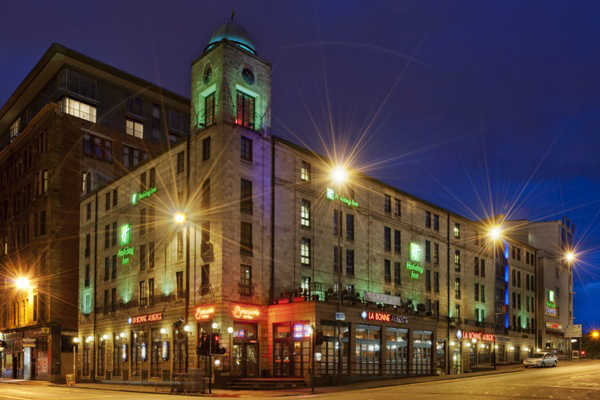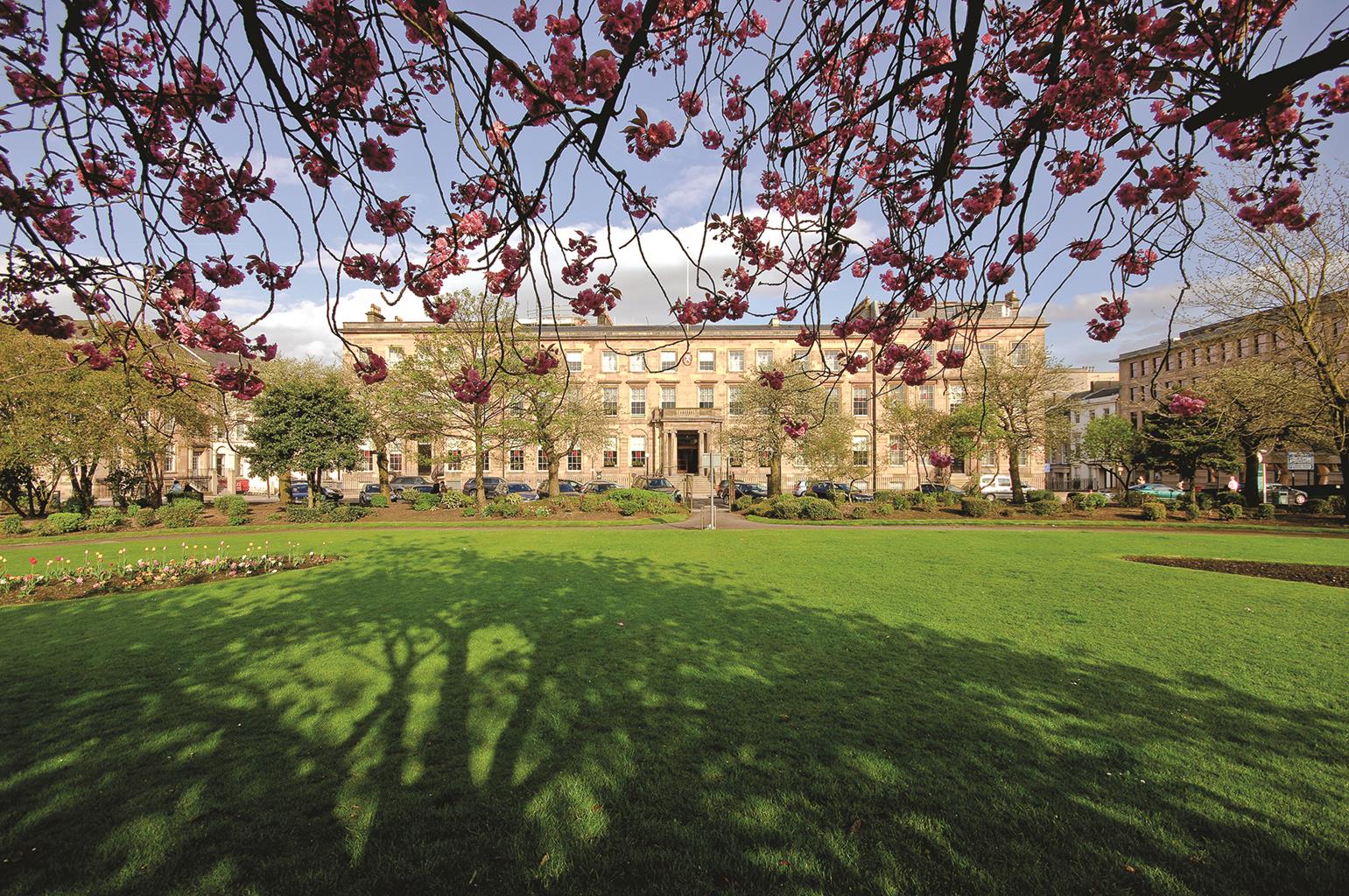The Broadcroft Hotel is a stylish contemporary building on the outskirts of Glasgow, offering…
Kilsyth and the Forth and Clyde Canal

Travel back in time following along the line of an old Roman wall and an 18th-century canal
4 miles (6.4kms)
About the walk
Running almost parallel across the central belt of Scotland are two old lines of communication separated in time by some 1,600 years. Despite their antiquity, both have experienced something of a renaissance of interest in recent years.
The Forth and Clyde Canal was the first canal built in Scotland and was created for sea-going vessels. Before it was built, ships had to sail nearly 310 miles (498km) all the way round the coast of Scotland to get from the west to the east coast. When the canal was completed the journey was reduced to 35 miles (56km). Construction began in 1768 with a team of navvies digging at Grangemouth on the Forth, and 22 years later they finally reached Bowling on the Clyde.
To the heart of Glasgow
This revolutionary engineering achievement linked Scotland's two great waterways - the Clyde and the Forth. It also substantially reduced the cost of, and therefore considerably increased, trade between the country's two most important cities, Glasgow and Edinburgh. Because it was built for shipping it had very large locks, 39 of them in total, each 60ft (18m) long and 20ft (6m) wide. A further 3-mile (4.8km) branch section was constructed from Maryhill to Port Dundas, in order to take trade right into the heart of Glasgow.
When it was new, the Forth and Clyde Canal boasted the Kelvin Aqueduct, which at 400ft (122m), was the largest structure of its kind then in existence. In 1802 the trials of the Charlotte Dundas, the world's first practical steamboat, were conducted along the canal and Scotland's first iron boat, The Vulcan, was built for a passenger service on this waterway. It was also the first canal to carry loaded railway wagons and was eventually purchased by the Caledonian Railway in 1868. It continued to operate well into the 20th century and finally closed to navigation on 1 January 1963. However, a growing interest in the leisure potential of canals led to a revival of its fortunes and after extensive restoration and the creation of the revolutionary Falkirk Wheel ( the only rotating boat lift in the world) it is once more open along its entire length.
Walk directions
Leave the car park on to the main road and turn right. Cross the road and turn immediately left on to a road signposted for Twechar and Kirkintilloch. Continue along this road for a short while and, when it turns sharply right, veer off the footpath to the left and on to the towpath of the Forth and Clyde Canal.
Go round a barrier and keep on along the towpath until it rejoins the pavement beside the main road. Take the next turning on the left, cross the canal via a bridge and enter Twechar. Continue on this road, heading uphill; near the top keep a look out for a sign on the left pointing to the Antonine Wall and Bar Hill.
Take the next turning on the left on to an access road. Continue along here past some houses and continue on a farm track. Go through a gate and uphill. Look back the way you have come for a grand view of the canal as it winds its way towards Glasgow.
At the sign for The John Muir Way turn left through the kissing gate and along a grassy lane, then go through another kissing gate to access the site. Veer left and uphill to Bar Hill Fort. From the top of the fort go downhill towards your left (NE direction) through woodland on to a well-defined trail.
Follow this trail through the trees, then up on to the summit of Castle Hill, going through two gates. From here head downhill with the remains of the Romans' Antonine Wall on your left-hand side. Turn right when your path is blocked by a drystone wall and follow it until you intersect a farm track.
Turn left through a gate on to a well-defined raised grassy pathway. Go through the gate at the end of the path. Cross the road on to the pavement and turn left, walking downhill. Keep to the right at the roundabout, still heading downhill to reach another T-junction. From here cross over the road and re-enter the car park.
Additional information
Towpath, farm road, footpath and road
Canal, pastures, hillside and woodland
Take care near livestock
OS Explorer 348 Campsie Fells
Car park near old quarry at Kilsyth
None on route
WALKING IN SAFETY
Read our tips to look after yourself and the environment when following this walk.
Find out more
Also in the area
About the area
Discover North Lanarkshire
Visiting North Lanarkshire is about getting active and heading outside to enjoy the beauty of the country parks and natural scenery. It’s about delving into the area’s past to find out about how industry and the people of Lanarkshire have shaped the county into what it is today. It’s about sampling local produce and catching your dinner.
The county features Scotland’s only indoor tropical rainforest, home to over 70 different species. Or visit the Roman remains of the Antonine Wall, a UNESCO World Heritage Site built around AD142 to mark the northern frontier of the Roman Empire, which was, at the time, the biggest engineering project Scotland had ever seen. Alternatively, relax and play a round at one of North Lanarkshire’s many golf clubs or gaze up at the stars at the Airdrie Observatory.
Nearby stays
Restaurants and Pubs
Nearby experiences
Recommended things to do
Why choose Rated Trips?
Your trusted guide to rated places across the UK
The best coverage
Discover more than 15,000 professionally rated places to stay, eat and visit from across the UK and Ireland.
Quality assured
Choose a place to stay safe in the knowledge that it has been expertly assessed by trained assessors.
Plan your next trip
Search by location or the type of place you're visiting to find your next ideal holiday experience.
Travel inspiration
Read our articles, city guides and recommended things to do for inspiration. We're here to help you explore the UK.













